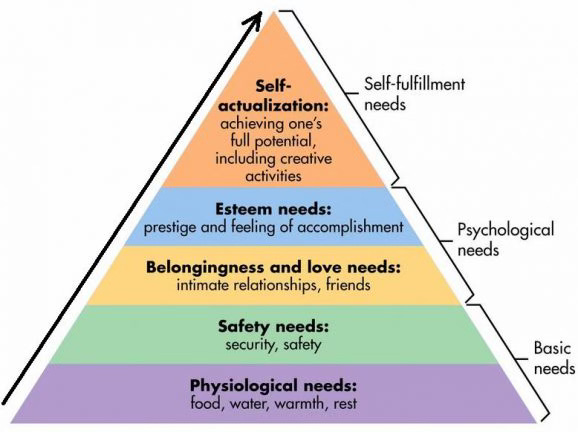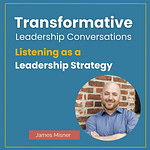What if I told you that motivating your team isn’t your job? It sounds counterintuitive, right? As a leader, your instinct is to inspire your team to perform at their best—but real, lasting motivation comes from within.
Happy New Year, and welcome to 2025! I love the energy of a fresh start.
Motivation is the perfect topic to kick off the new year.
Aren’t we all looking for a little more motivation—whether for ourselves or for those around us? Today we’ll look at motivation from two different angles:
What motivates YOU as a leader.
What you can do as a leader to help UNCOVER motivation within your team members.
After all, how can you help others with their motivation if you don’t have clarity about your own?
Let me start with a controversial statement:
“Leaders can’t motivate people—and nor should they.”
Do you think this true or false? If it were true, how does that statement make you feel? Anxious? Relieved? Curious?
Take a moment to reflect on this, and we’ll come back to it shortly.
For some context, this episode draws on material from a very popular leadership workshop I offer to my clients called, Activating Motivation & Engagement. This workshop is based on concepts developed by Peter Axelson, who you might remember from Season 4 when he co-hosted our masterclass on team development.
So, let’s get started!
Setting the Stage
First, let’s define motivation as it relates to work. Simply put, motivation is about what people need, want, and desire from their work.
Are YOU getting what you need, want, or desire from YOUR work?
As a leader, it’s essential to understand what you—and your team—need to do good work.
But here are a few things to keep in mind about motivation:
Motivation isn’t something you “fix” once and then move on.
It’s not a box you check; it’s a continuous process that requires attention and effort.Motivation is dynamic and evolves over time.
What motivated you two or three years ago might not motivate you today. The same is true for your team members.Understanding someone’s motivation is tied to your relationship.
The better you know someone, the more likely you are to understand what truly motivates them. Building these relationships is key to unlocking their potential.
Now, let’s take a moment to look at the impact of motivation—both the benefits of having motivated people on your team and the risks when people on your team have low motivation.
The Benefits of a Motivated Team
Motivated team members are the backbone of any high-performing organization. Here’s why; people who are motivated have…
Higher Productivity: Motivated individuals are more focused, efficient, and committed to their work, leading to better results.
Increased Creativity: They’re more likely to think outside the box and take initiative, driving innovation and problem-solving.
Higher Job Satisfaction: Motivated employees are happier in their roles, which reduces turnover and strengthens team stability.
A Positive Ripple Effect: Motivation is contagious. One person’s enthusiasm can inspire and uplift the entire team.
The Risks of Low Motivation
On the flip side, a lack of motivation can significantly impact your team’s effectiveness. Low motivation can create…
Low Performance: Disengaged team members put in less effort, leading to missed deadlines and subpar work.
Negative Atmosphere: Low motivation can create a toxic environment, dragging down even your high performers.
High Turnover: Unmotivated employees are more likely to leave, increasing costs for recruiting and training.
Stagnation: Without motivation, people stick to the status quo, avoiding risks or new ideas.
The takeaway is clear: Motivated team members are engaged, productive, and innovative. Unmotivated team members? They’re disengaged, far less productive, and unlikely to contribute in meaningful ways.
As a leader, your job is to tap into what drives motivation for both you and your team.
What Motivates People?
Now let’s turn to understanding what actually motivates people.
There are several great frameworks on motivation. Today we’ll look at two. Let’s start with a classic: Maslow’s Hierarchy of Needs. Remember that one from Psych 101?
If you’re not familiar, Maslow’s Hierarchy of Needs is a psychological theory that explains human motivation as a progression of needs, depicted as a pyramid.
A key idea in Maslow’s theory is that lower-level needs must be satisfied before higher-level motivations can be pursued.
So, here’s a critical question for you as a leader:
What basic needs must be met for me to tap into my own motivation at work?
What basic needs do my team members need fulfilled to access their full potential?
This is especially relevant in today’s world. Think about how the global pandemic shifted our priorities and reshaped how we think about what we need—both personally and professionally.
If your team members are struggling with basic needs—like physical safety, psychological well-being—they may find it difficult to engage with higher-level motivations like self-actualization. This could create a barrier to reaching their full potential at work.
As leaders, understanding where your people are in this hierarchy and creating an environment where everyone can thrive is critical.
Extrinsic vs. Intrinsic Motivation
Let’s now focus on a critical aspect of motivation: Extrinsic vs. Intrinsic Motivation. What’s the difference, and which one matters more?
Extrinsic Motivation is driven by external rewards like promotions, bonuses, or public recognition. These are rewards you receive AFTER the work is complete. These rewards come from outside of you.
Intrinsic Motivation is driven by internal rewards like a sense of purpose, personal growth, or mastering a skill. These are the rewards you receive WHILE we are doing the work. These rewards come from inside of you.
Both types of motivation are crucial—everyone needs a balance of both. After all, you can’t thrive on intrinsic motivation alone if you feel you’re not being paid fairly for the value and impact you bring to the organization.
However, here’s the challenge: many leaders and organizations overly focus on extrinsic motivation while neglecting intrinsic motivation. Why does that happen? My theory is this:
Extrinsic motivation is easier to measure and can be applied systematically across an organization. It’s static and predictable.
Intrinsic motivation, on the other hand, is personal, dynamic, and harder to detect. It evolves over time and varies from person to person, making it more challenging to identify and nurture.
The Benefits of Intrinsic Motivation
Yet research consistently shows that focusing on intrinsic motivators has significant, long-term benefits. Management consulting firm McKinsey revealed that when employees are intrinsically motivated, they show 46% higher levels of job satisfaction and 32% greater levels of commitment to their jobs. At the same time, they’re a lot less likely to experience job-related burnout – which all means that employees are a lot more likely to want to stick around with their employer. (Source: Workstars)
So, this raises an important question: How do we tap into intrinsic motivation? How do we nurture it in ourselves and others?
Intrinsic Motivation at Work
One of my favorite frameworks for intrinsic motivation comes from Kenneth Thomas’s book, Intrinsic Motivation at Work. In his model, intrinsic motivation is broken down into four categories:
A Sense of Meaningfulness
The feeling that you’re on a path worth your time and energy—that you’re contributing to a valuable mission and that your work matters in the larger scheme of things.A Sense of Choice
The opportunity to select activities that align with your preferences and values, and to perform them in ways that feel right to you.A Sense of Competence
The accomplishment you feel from skillfully performing activities you’ve chosen—knowing you’re doing your work well.A Sense of Progress
The feeling that your efforts are moving you closer to achieving your purpose—that your activities are making a real impact.
When people experience these intrinsic motivators—meaningfulness, choice, competence, and progress—they’re not just more satisfied. They’re also more resilient, engaged, and committed to their work.
Now, take a moment to reflect on your own work. Which of these intrinsic motivators resonates most with you?
As I mentioned earlier, understanding your own intrinsic motivators is critical—not only for your own engagement but also for helping the people you manage identify and cultivate their intrinsic motivators.
Two Key Questions to Consider
For both you and the people you manage, ask these two essential questions:
AWARENESS: What do I need from my work to truly enjoy this job?
ACTIONS: What steps could I take to get more of the “rewards” I value from my work?
Realizing that tapping into intrinsic rewards is both possible and actionable can be transformative—not just for you, but for your team. By helping people connect with what truly drives them, you create a workplace where everyone can thrive.
Skeptical Paul
How is this landing with you so far? Does it make sense? Or are you feeling a bit skeptical about whether intrinsic rewards are really that important?
Let me tell you about a client of mine—Paul (not his real name). Paul worked at a consulting firm and, yes, he was skeptical.
When I conducted a 360-assessment to gather feedback on Paul’s strengths and development areas, a clear theme emerged: he needed help managing and motivating his team.
Paul’s primary intrinsic motivator was competence. He derived satisfaction from elevating his skills and learning something new every day. He assumed that everyone else in his industry felt the same way. After all, how could someone in consulting be motivated by anything other than competence? He thought it was impossible for anyone on his team—or at the firm—to be motivated by something like meaningfulness. “We’re not a nonprofit,” he said.
I challenged Paul’s assumptions: “You might be right, but wouldn’t it be worthwhile to ask your team members what motivates them? Use this as an opportunity to open up a conversation.”
I suggested he send his team the intrinsic motivation model we just discussed, asking them to think about which intrinsic rewards resonated most with them. Then, I advised Paul to meet with each team member one-on-one to explore their motivators in more detail.
A few weeks later, during our next coaching session, Paul came back to me, surprised by what he’d discovered. One of his team members had identified meaningfulness as their primary intrinsic motivator! And it didn’t stop there—several other team members prioritized motivators other than competence, such as progress and choice.
This experience taught Paul two important lessons:
Don’t make assumptions about what motivates others. What drives you might not drive someone else (even if you’re doing the same type of work or job)—and that’s okay.
One-on-one conversations about motivation are invaluable. Taking the time to ask and understand can unlock surprising insights and lead to stronger connections with your team.
Paul’s skepticism shifted to curiosity and, ultimately, a deeper appreciation for how tapping into intrinsic motivators could improve his leadership and his team’s performance.
What about you? Are you ready to have these kinds of conversations with your team?
Leaders and Motivation
Building on Paul’s example, let’s turn to your role as a leader in helping your team members uncover and tap into their intrinsic motivators. But it’s not just your responsibility—team members also play an active role in this process.
This brings us back to the provocative statement I posed at the beginning: “Leaders can’t motivate people—and nor should they.”
I believe this is true. At the same time, as a leader, you share some responsibility for fostering an environment where intrinsic motivation can thrive. Let’s break this down.
Here’s a list of responsibilities for both team members and team leaders. These two sides of the same coin work together. By the way, chances are, you’re on both sides of this equation: you’re likely both a team member and a team leader.
Responsibilities of Team Members
Clarify what you want from your work. Continuously reflect on what matters most to you in your job, role, or career—and remember, your motivators may evolve over time.
Communicate openly with your leader. Have honest conversations about what you want from your work, understanding that you won’t always get to do what you want all the time.
Take initiative. Generate ideas and take practical steps to align your work with what you enjoy, in coordination with your leader and in alignment with business needs.
Seek support. Talk with your leader about how they might help you create opportunities to focus more on what motivates you—again, in a way that supports organizational goals.
Responsibilities of Team Leaders
Facilitate clarity. Engage each team member in conversations to help them reflect on and articulate what they most want from their work.
Encourage ownership. Support your team members as they explore steps they can take to align their work with their intrinsic motivators.
Provide support. Think about specific ways you can help them create opportunities to do more of what they enjoy. In fact – doing this together is even better!
Balance motivation and responsibilities. Guide team members in balancing what they’re motivated by with the less-exciting aspects of their roles that will still be necessary for them to focus on.
When team members take responsibility for clarifying and communicating their motivators, and leaders take responsibility for creating space and support for those motivators, the result is a dynamic partnership. This shared approach creates an environment where intrinsic motivation can flourish—and where both individuals and the organization can thrive.
Coaching Conversations
Keep in mind that these are coaching conversations. If you’re the team leader, your role is to help your team members reflect, uncover, and explore how they can best contribute to the team and the company.
Think about it:
When was the last time you had a meaningful conversation with one of your team member about what truly drives them?
How often do you check in, knowing that what motivates people evolves over time?
To support motivation, here are three practical steps you can take and then questions you can ask during your one-on-one conversations:
1. Clarify What’s Important: Help your team member articulate what matters most to them.
2. Define the Gaps: Identify where their current experience falls short.
3. Problem-Solve Together: Collaborate to create actionable steps to align their work with what motivates them.
Now for a few sample questions you can use and customize in your one-on-one conversations…
At this point in your life and career, what are the 2-3 most important things you want from your job? How would you rank them in importance?
On a scale of 1-10, how satisfied are you with your job/work? What would it take for you to get closer to a 10?
What parts of your job do you enjoy the most? Enjoy the least?
If you could change your job to make it more rewarding, what changes would you make?
What’s one thing you’re not getting enough of from your work?
What people want from their work often evolves over time. What have you noticed about what’s most important to you, and how has that changed?
Remember: the goal of these conversations is to clarify what their most important motivators are, understand the gap between where they are now and where they’d like to be, to come up with ways your team member can get MORE rewards from their work and lastly to align team member motivations with business needs.
Your Challenge
Let’s make this real. Identify one person on your team who you’d like to have a conversation with about motivation. This should be independent of any discussions about performance. I’ll help you with some guidelines:
Before the conversation, plan to share:
What you’ve learned in this episode.
Which intrinsic motivators resonate most with you and why.
Share Kenneth Thomas’s intrinsic motivation framework so they can reflect on their own motivators.
Before you meet, consider these questions:
How motivated are they right now?
If they were more motivated, what difference could it make in the work they do today?
Which questions will you ask to help them explore and articulate their motivators?
What actions could you both take, to help them experience more intrinsic rewards in their current role?
Taking these steps will not only help your team members connect with their motivators but also strengthen your role as a leader creating a culture of engagement.
Before you try this on your own, would it help to share an example? Let me tell you a story about Alex.
A Quick Story
Alex had been a high performer at Litney Partners for over four years. Her track record was impressive—she’d earned a promotion and consistently delivered strong results. But over the past year, her motivation started to wane after Litney Partners was acquired by another firm. The new company brought significantly more controls over how everyone worked, and Alex began to show signs of disengagement, even carrying a slightly negative attitude.
Alex’s manager, Julia, gradually recognized how these organizational changes were affecting Alex. Julia suspected that Alex was most engaged when she had control over her schedule and decisions. In other words, Alex’s intrinsic motivator was most likely a sense of choice. With this in mind, Julia approached Alex with curiosity, using some of the reflective questions we just reviewed together.
Through their conversation, Alex revealed that she felt boxed in by her current role. While she was clear on the outcomes expected of her, she didn’t feel she had enough autonomy in deciding how to achieve them.
Together, Julia and Alex explored ways to create more choice within the boundaries of her role. They discussed adjustments Alex could make, such as structuring her day differently, approaching projects in her own way, and focusing her efforts where she felt she could have the greatest impact.
Julia was upfront about the fact that not everything could change. But by identifying areas where Alex could regain a sense of ownership and collaborating on actionable steps, they began to see progress.
Over time, Alex’s motivation steadily improved. Her energy and attitude shifted, and she returned to making a meaningful impact on the team. This process—clarifying what’s important, identifying gaps, and problem-solving together—helped Alex reconnect with her intrinsic motivator, reigniting her engagement at work.
Your Turn
Now it’s your turn to try this out. Have these conversations with your team and let me know how it goes. I’d love to hear what you tried, what worked, and even what didn’t! Reach out to me directly at winnie@winnifred.org or connect with me on LinkedIn or right here on Substack.
Let’s make motivation a continuous and intentional practice—not just check on our to do list. Together, we can build teams that are not only engaged but genuinely inspired to do their best work.
You're always welcome at the table, where every discussion has the potential for transformative change.

















Share this post